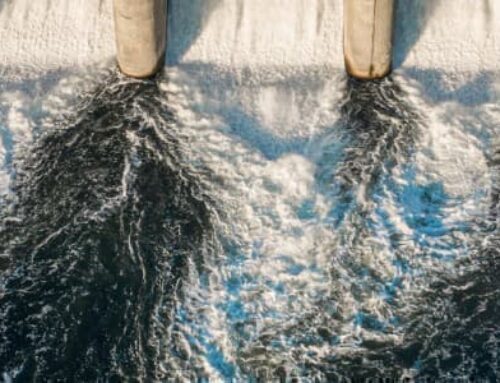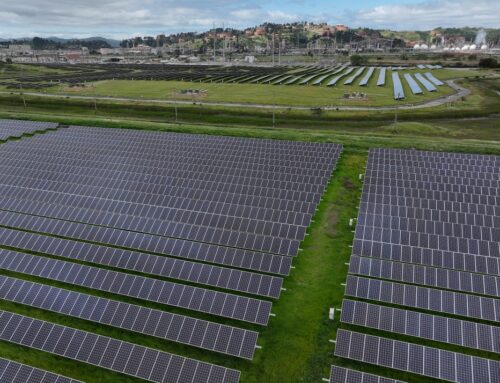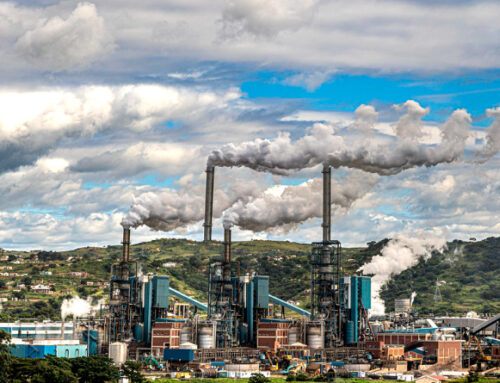Can U.S. Hydropower Compete in a New Energy Era?
October 26, 2025
The United States has long used hydropower, which is now the country’s largest source of renewable energy, for electricity production. Hydropower contributed 27 percent of total U.S. utility-scale renewable electricity generation and 5.86 percent of total utility-scale electricity production in 2024. The U.S. first started developing its hydropower fleet in the late 1800s, long before other renewable energy sources, such as wind and solar power.
Hydropower plants produce electricity using the elevation difference created by a dam or diversion structure. Water flows in one side and exits at a lower point, spinning a turbine, which runs a generator to produce electricity. However, of the more than 90,000 dams in the United States, fewer than 3 percent produce power, with the others being used for recreation, farm ponds, flood control, water supply, and irrigation.
While there is huge potential for hydropower in the United States, many of the existing facilities are getting older and more expensive to maintain. The Bipartisan Infrastructure Law that was launched under the Biden administration provides $753.6 million to the U.S. Department of Energy (DoE) for hydropower, but significantly more funding would be required to expand rather than solely maintain the country’s hydropower capacity.
The U.S. Energy Information Administration (EIA) expects hydropower generation to rise by 7.5 percent in 2025, after falling by 241 billion kilowatt-hours (BkWh) in 2024, to its lowest generation since 2010. Generation is expected to reach 259.1 BkWh this year, to contribute around 6 percent of U.S. electricity production. Approximately half of the hydropower generating capacity in the U.S. is in the western states of Washington, Oregon, and California.
Energy experts suggest that now may be a make-or-break moment for hydropower, as several existing facilities require high quantities of funding to extend their lifespans. Almost 450 hydroelectric plants, which contribute over 16 GW of electricity in total, are due to be relicensed across the U.S. over the next 10 years. This accounts for around 40 percent of non-federal hydropower.
However, the introduction of stricter requirements will require millions of dollars to be spent on upgrades to qualify for a new operating permit for existing facilities, which is forcing many companies to close operations. Many of these plants have been providing vast quantities of stable, clean electricity for decades. However, the falling costs associated with natural gas, wind, and solar power have made it increasingly difficult for hydropower to compete.
Most dams in the U.S. have an average age of 65 years, meaning they were built without the same consideration for the environment that is now expected for hydropower development. Upgrading old facilities to enable the unobstructed passage for fish and other wildlife, as well as meeting other environmental standards, would be extremely expensive for operators. In addition, many of these facilities require significant investment to fix or replace turbines and other hardware that have atrophied over time.
Another barrier to relicensing is the lack of clear oversight for the sector. No single agency has full authority over hydropower. This can make the bureaucratic process for a new license extremely complex, as various agencies may have different standards and expectations for operators. At present, it takes an average of eight years to relicense an existing hydropower facility, which is far longer than for other energy sources.
In January, the Biden administration’s Treasury Department expanded a renewable energy rule to include hydropower, which treats facilities as new if operators reinvest a minimum of 80 percent of the facility’s market value into infrastructure upgrades, making them eligible for larger federal write-offs. Only one hydropower facility has used the federal investment tax credit to date, as, until recently, there was a lack of clear guidance on how to apply the tax credit.
While President Trump has been highly critical of many renewable energy sources, hydropower is one of the few clean energies that Trump appears to support. Trump’s One Big Beautiful Bill Act preserves the sector’s access to key federal tax credits for the next eight years, which could help reassure investors.
There have been some positive signs for the hydropower sector in recent months, with the signing of a $3 billion hydropower deal between Google and Brookfield Asset Management in July. Google hopes the project will provide up to 3 GW of hydropower for its data centres. The move includes 20-year power purchase agreements for two hydropower facilities in Pennsylvania. The two sites are expected to be upgraded and relicensed as part of the arrangement, and Google aims to eventually expand the deal beyond the two initial sites to other parts of the Mid-Atlantic and Midwest, the company said.
“This collaboration with Brookfield is a significant step forward, ensuring clean energy supply in the PJM region where we operate,” Google’s head of data centre energy, Amanda Peterson Corio, said in a statement.
To enable hydropower plants to continue providing a significant proportion of the United States’ clean electricity, significant funding must be contributed to the sector to make facilities eligible for relicensing. Many plants require millions of dollars in upgrades, which most operators simply cannot afford. Meanwhile, the falling cost of gas, solar, and wind power has made hydropower less competitive in recent years, despite its long history in the U.S. and significant contribution to the country’s clean energy mix.
By Felicity Bradstock for Oilprice.com
More Top Reads From Oilprice.com:
- India May Reduce Russian Oil Imports for Trade Deal
- Japan’s New PM Pushes for Faster Nuclear Reactor Restarts
- Kazakhstan to Keep New Fuel Price Freeze Until Spring
Search
RECENT PRESS RELEASES
Related Post



